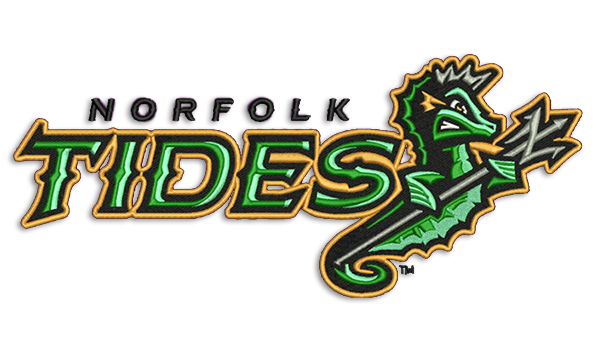Understanding the Needlework Digitizing Process: Your Ultimate Guide
Needlework digitizing is a thorough craft that needs accuracy and know-how to convert elaborate layouts right into electronic styles for maker embroidery. As artisans get started on this trip to master the embroidery digitizing process, a comprehensive understanding of the fundamentals sets the foundation for excellence. Nonetheless, beyond the primary expertise lies a world of sophisticated software application, specialized tools, and nuanced strategies waiting to be checked out. By diving into the nuances of digitizing, one can unlock a world of innovative possibilities and raise their needlework jobs to brand-new elevations.

Understanding Embroidery Digitizing Fundamentals
Needlework digitizing fundamentals form the foundation whereupon detailed designs are translated into machine-readable formats for exact sewing. This initial action in the needlework digitizing procedure is vital for guaranteeing that the last embroidered product is a loyal depiction of the initial design. Comprehending embroidery digitizing essentials includes comprehending vital concepts such as stitch types, stitch instructions, thickness, underlay, and pull compensation.
Stitch types play an important role in figuring out the visual and textural outcome of the embroidered style. By selecting the appropriate stitch type, whether it be satin, fill, or running stitch, digitizers can accomplish the wanted impact and boost the general quality of the needlework. Additionally, sew direction affects the circulation and measurement of the style, while density establishes the spacing and coverage of the stitches.
Furthermore, rug stitching offers stability to the layout by safeguarding the material and stopping distortion throughout the needlework process. Pull payment is an additional vital consideration to neutralize the all-natural propensity of material to agreement when stitched. Mastering these needlework digitizing basics is fundamental for producing professional-quality stitched items.
Selecting the Right Digitizing Software Application
Selecting the appropriate digitizing software application is an essential choice that considerably influences the performance and quality of the needlework digitizing procedure. Digitizing for Embroidery. When choosing the best digitizing software, it is vital to consider elements such as the complexity of designs you intend to create, the user-friendliness of the software, the level of client support used, and the compatibility with your needlework maker
There are various digitizing software choices available out there, ranging from standard programs for beginners to sophisticated software for expert digitizers. Some prominent choices include Wilcom EmbroideryStudio, Hatch Embroidery Software, and PulseID. These software application bundles offer a vast array of devices and functions to aid you produce elaborate styles with ease.
Before making a decision, it is advisable to check out the different software choices through free trials or trials to determine which one ideal fits your needs. Additionally, checking out testimonials and seeking referrals from skilled digitizers can provide important insights right into the strengths and weak points of each software program package (Digitizing for Embroidery). By very carefully evaluating your needs and contrasting the features of different digitizing software, you can make an informed choice that enhances your needlework digitizing workflow
Digitizing Tools and Methods

Optimizing Layout Settings for Needlework
Understanding the intricacies of design setups is essential in accomplishing optimum outcomes in the embroidery digitizing process, building upon the structure laid by recognizing digitizing devices and strategies. When enhancing style setups for embroidery, it is vital to consider variables such as stitch type, density, padding, draw payment, and enrollment. Sew type choice influences the total look and feel of the layout, with options like satin, fill, and running stitches offering different textures and effects. Density refers to the spacing and thickness of stitches, impacting the style's protection and longevity. Proper rug sewing gives security and prevents fabric distortion, especially for complicated layouts or on elastic materials. Draw compensation changes for textile stretch throughout sewing, making certain precise design duplication. Enrollment settings straighten different aspects of the design accurately, maintaining general design integrity. By fine-tuning these layout settings, embroiderers can enhance the top quality and precision of their embroidered developments.

Troubleshooting Common Digitizing Issues
When experiencing typical digitizing problems throughout the embroidery procedure, it is vital to recognize the source and execute efficient solutions quickly. One typical problem is stitch density issues, where stitches may be too dense, triggering the textile to pucker, or also sporadic, bring about gaps in the layout. Changing the stitch thickness setups in the digitizing software see page program can aid resolve this concern.
Another regular challenge is string breaks throughout the needlework process. This can happen as a result of numerous reasons such as wrong tension setups, plain needles, or using low-quality string. Making certain correct upkeep of the needlework equipment, consisting of normal needle modifications and stress adjustments, can reduce the incident of thread breaks.
Moreover, layout registration mistakes can lead to misaligned elements within the needlework style. Examining the style positioning in the digitizing software program and making needed adjustments before stitching can assist in avoiding this concern. By attending to these common digitizing problems promptly and properly, you can guarantee a smoother embroidery process and top quality completed products.
Conclusion
To conclude, grasping the needlework digitizing procedure calls for a strong understanding of the basics, the best selection of software, and knowledge of devices and methods. Maximizing style settings and repairing usual digitizing issues are important action in guaranteeing top quality needlework outcomes. By adhering to these actions diligently, one can achieve accuracy and efficiency in the digitizing procedure.